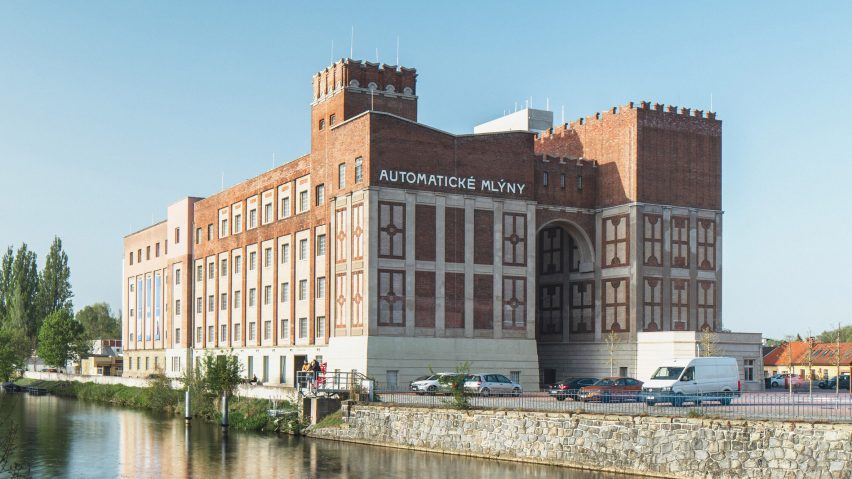
Prokš Přikryl Architekti transforms historic mill in Czech Republic into arts centre
Local studio Prokš Přikryl Architekti has converted a historic brick mill building in the Czech Republic into an arts centre, inserting galleries into its cavernous concrete grain silos.
The studio renovated the silo building, which forms part of a wider complex in the city of Pardubice called Automatic Mills, a national cultural monument designed by Czech architect Josef Gočár in the early 20th century.
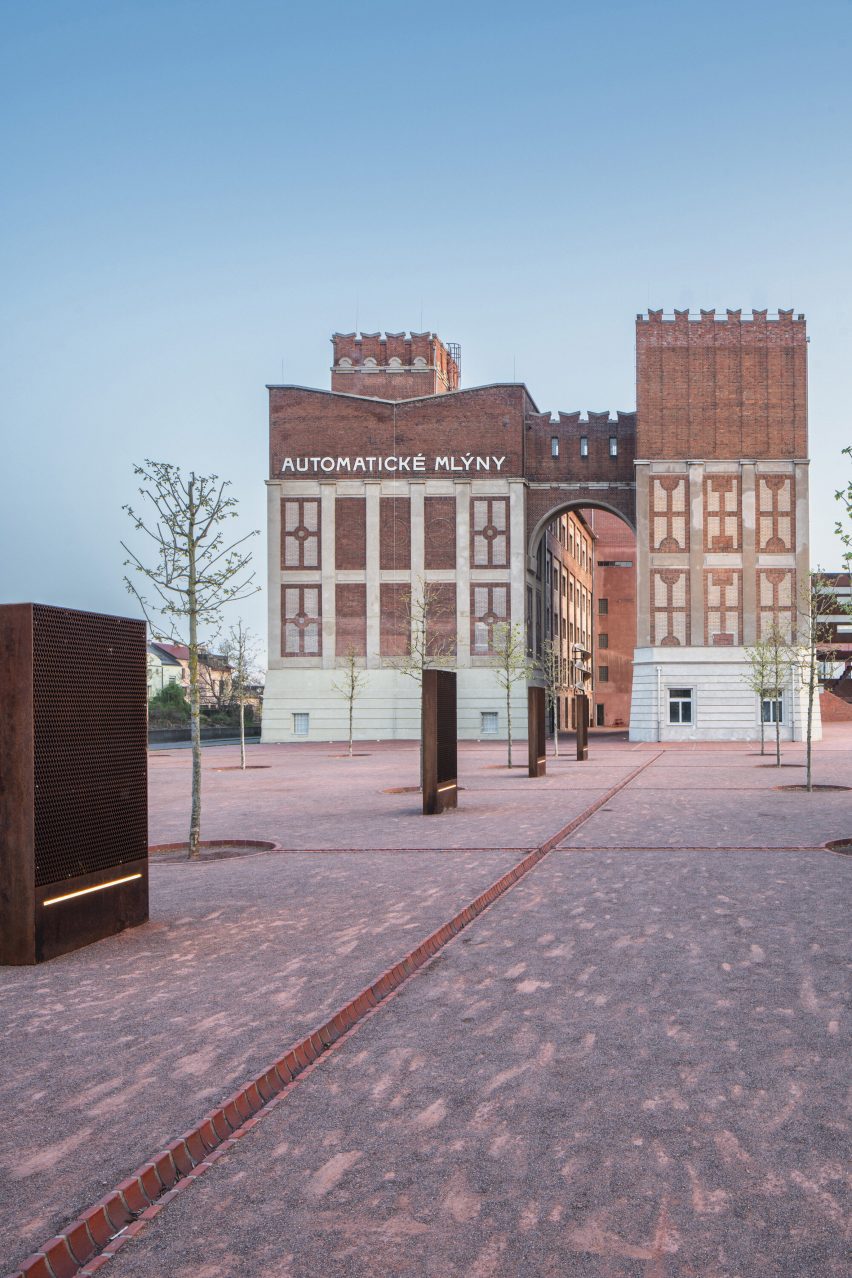
Since 2016, the buildings on the site have been undergoing redevelopment into a cultural district by a team of architects, untied by a public, brick-paved plaza.
Prokš Přikryl Architekti reconfigured the former mill and grain silo to accommodate a multi-purpose events hall, galleries, rooftop bar and public toilets.
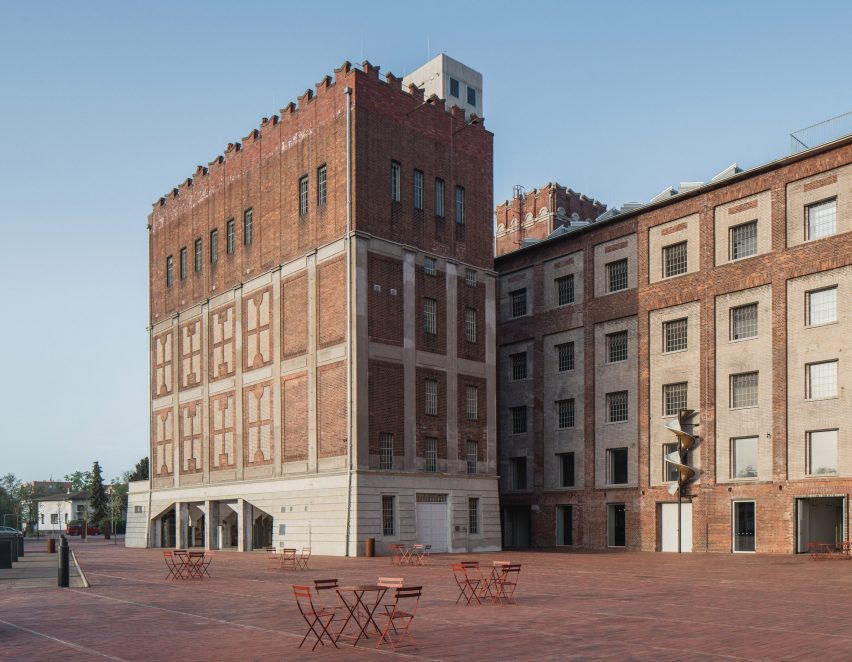
"The challenge was to find the ideal level of intervention in the National Cultural Monument," the studio told Dezeen.
"However, we did not want to work only with the architectural layer of facades, but also with the industrial layer of the whole building. We tend to raw expression, materials in its pure form and a straightforwardness," it added.
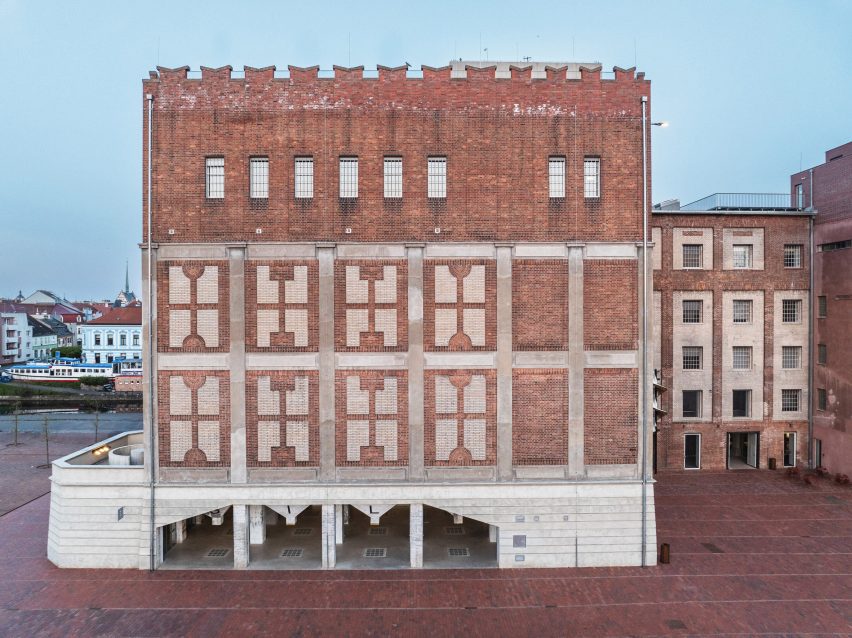
The majority of the building is occupied by vast, four-storey-high grain bins with rough concrete interiors. Previously inaccessible, these spaces have now been repurposed as temporary exhibition spaces connected by steel walkways.
The large hoppers at the base of these grain bins have been revealed through a cut-out in the rusticated base of Automatic Mills, creating a sheltered extension of the surrounding square and access to the public toilets in the basement.
Atop the grain bins, the former machine room on the fifth floor contains a multi-purpose hall designed to host lectures, concerts and social events, benefitting from natural light from small windows in the facade.
Glass-brick sections in the floors of both the upper and lower levels of the building provide glimpses into the siloes, as well as allowing daylight to travel through the whole interior.
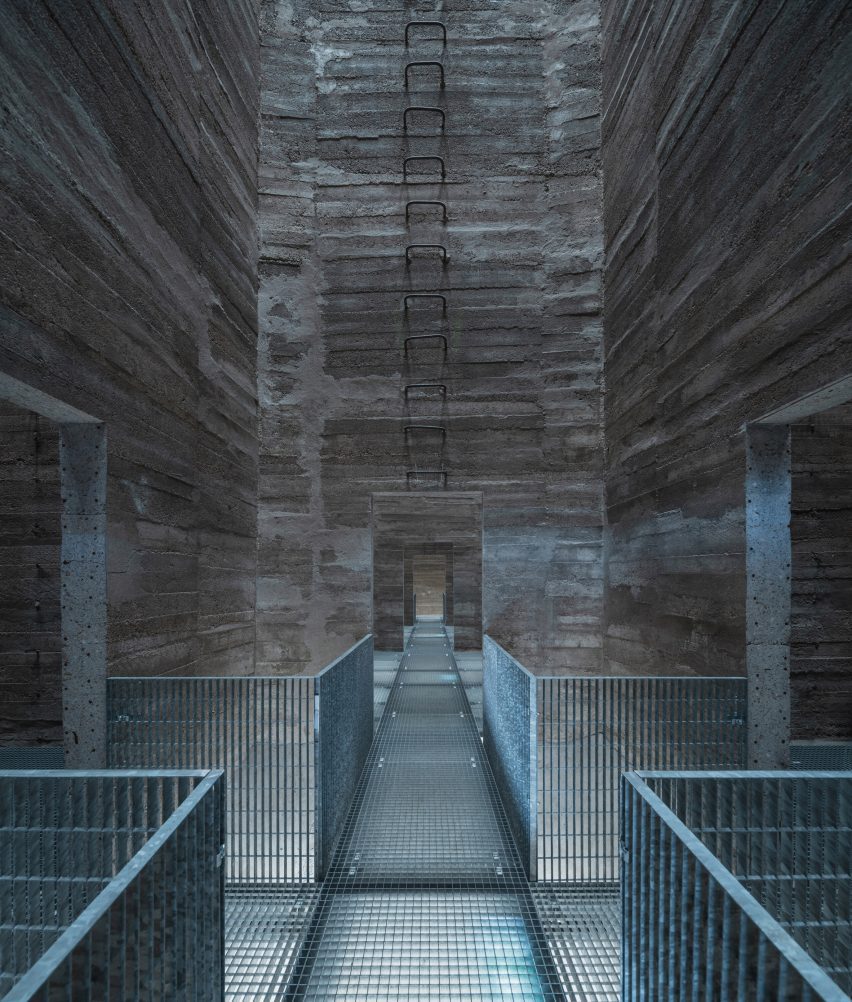
The openings on the ground and fifth floor are the only alterations made to the exterior brickwork, which is finished with pilasters and gridded decoration in a distinctive Czech style known as Rondocubism.
A rooftop terrace surrounded by a crenelated brick parapet crowns the building, where a small concrete volume contains a bar for visitors.
Access throughout the building is provided by a stair and lift core at the rear of the building, which has been upgraded to be fully wheelchair accessible.
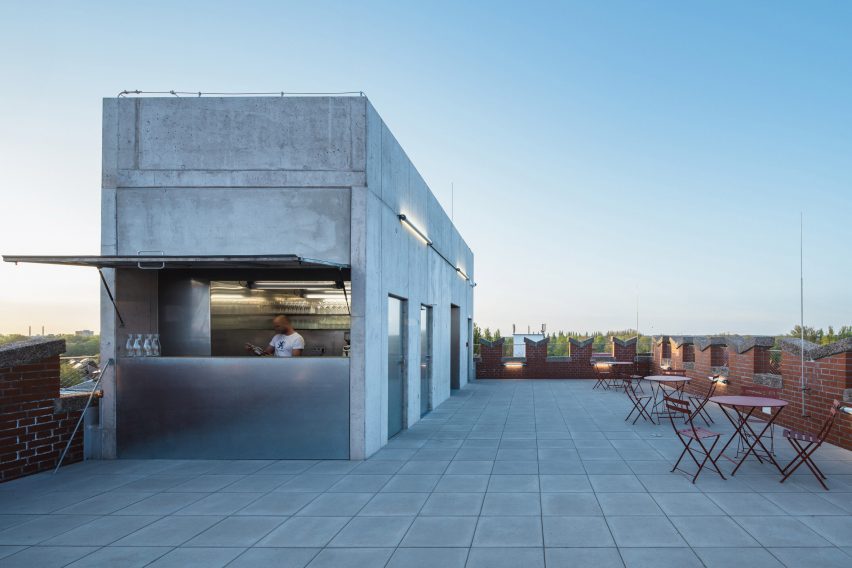
"Today, as in the past, a single communication core connects the whole building," the studio told Dezeen.
"The main change is the hall inserted into the former machine room on the 5th floor, granting the space a privileged position above the entire area. Together with the hall, the roof of the building has been made wheelchair accessible," it added.
Elsewhere in the Czech Republic, Polish studio KWK Promes recently transformed the industrial brick structure of a former slaughterhouse in Ostrava into a contemporary art gallery.
The photography is by Petr Polak.